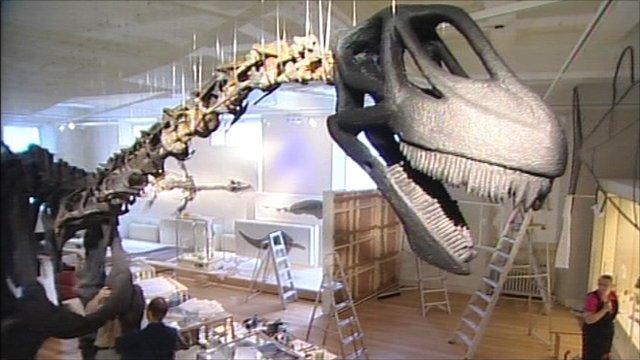Giant 'bird-like dinosaur' remains to go on show in Nottingham
- Published
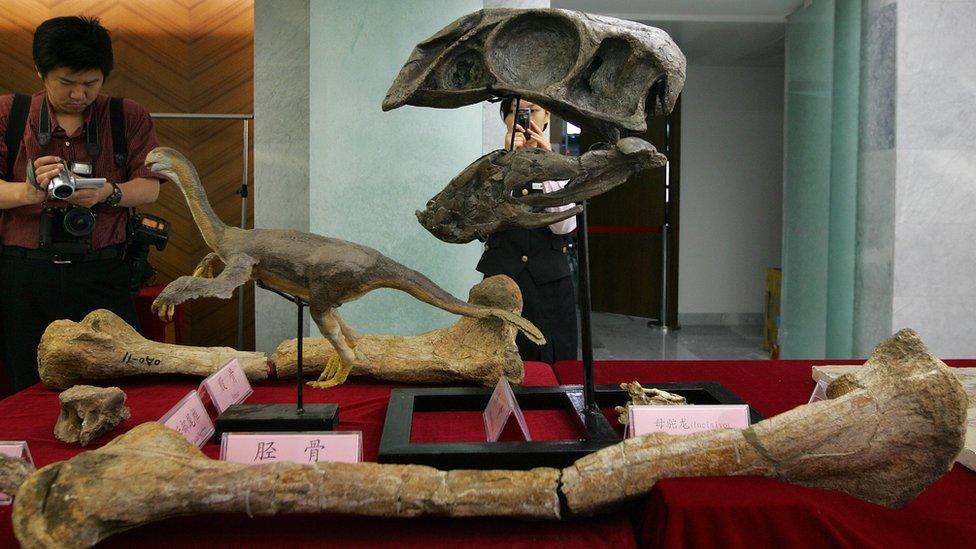
Fossil hunter Xu Xing discovered the remains of Gigantoraptor in 2007, which are on display in Beijing, China
The remains the largest feathered creature ever discovered are to go on display in Nottingham after leaving China for the first time.
Gigantoraptor, which was four metres tall and eight metres long, will be one of several dinosaur specimens to feature at Wollaton Hall next summer.
Dr George Baxter, of The University of Nottingham, said the exhibition was "an enormous coup for the city".
The remains have not left Asia since they were discovered in 2007, external.

Gigantoraptor

The creature may have been more than two tons in weight, yet was only a young adult when it died
The toothless skull was more than half a metre long with a horny beak
It had long hind legs and large claws and would have been fast enough to outrun most predators around 70 million years ago
It seems certain that Gigantoraptor's feathers were for display rather than for flight or insulation
It laid the largest dinosaur eggs ever found

The exhibition, which is on loan from museums in China, also includes the best preserved dinosaur fossils from around the world - including skin and feathers.
The flying Microraptor and specimens of some the largest prehistoric creatures ever found in China, will also be part of the collection.
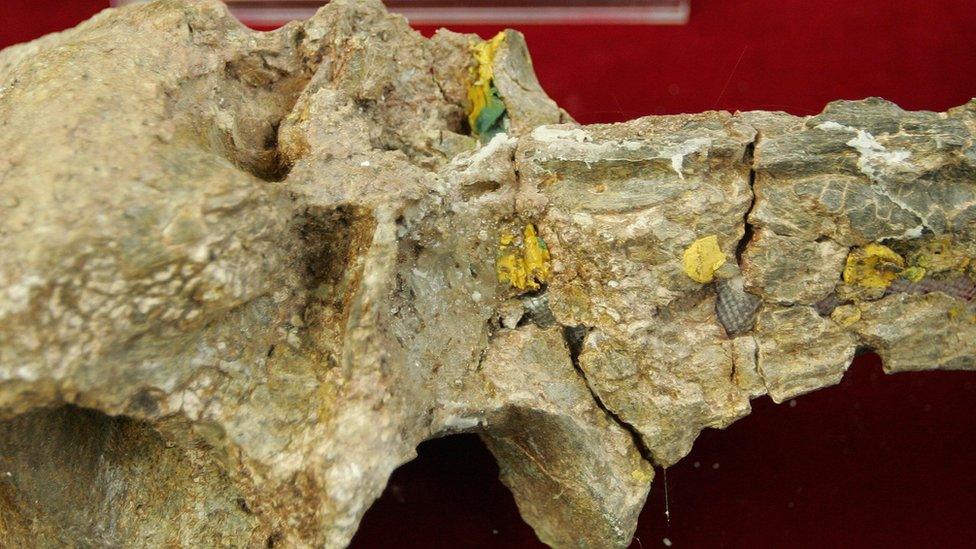
The specimens in the exhibition were discovered and studied by the Chinese institute, in Beijing, which has close links with the University of Nottingham
Dr Adam Smith, of curator and palaeontologist at Wollaton Hall, said: "This is the first time some of these incredibly important and rare fossils have ever been displayed outside of China.
"Some of the most important fossils in the world... have revolutionised our understanding of dinosaurs and the origin of birds and feathers - birds are literally dinosaurs. Dinosaurs that learned how to fly."
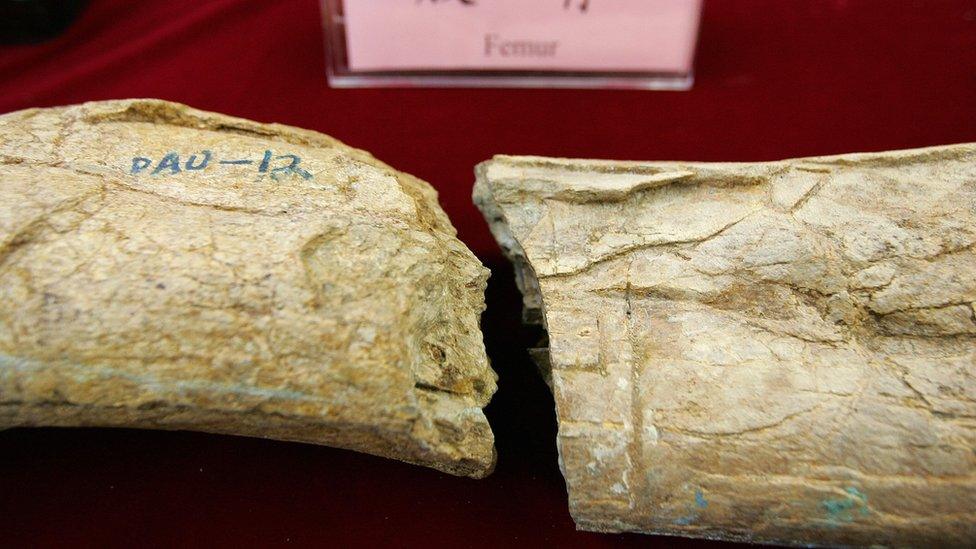
Palaeontologist Dr Adam Smith said "important fossils... have revolutionised our understanding of dinosaurs"
Many of the species are relatively new to science, having only been discovered and named in the last 20 years - some as recently as 2015.

The specimens in the exhibition were discovered and studied by the Chinese institute, in Beijing, which has close links with the University of Nottingham
Councillor Dave Trimble, of Nottingham City Council, said he believes the "prestigious Chinese exhibition" will attract people from across the world.
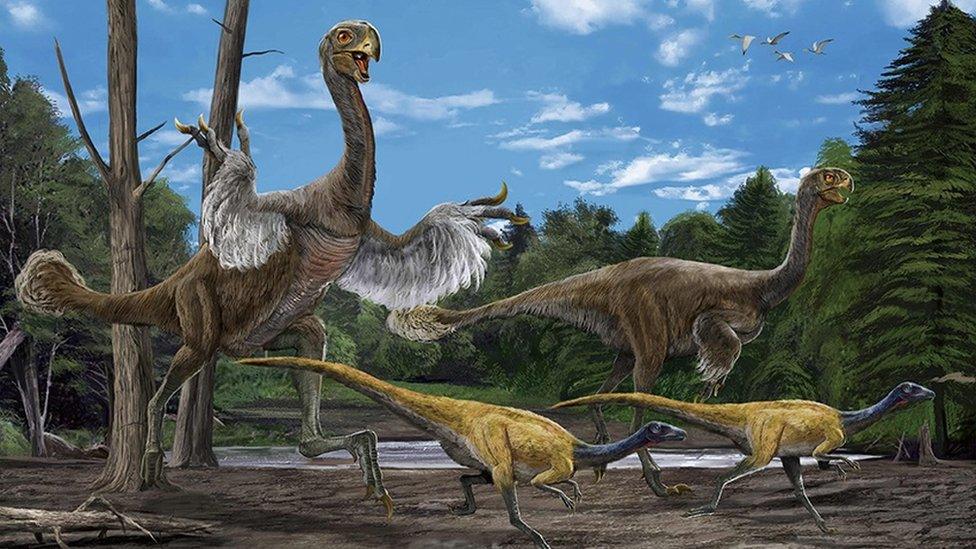
It is believed the Gigantoraptor was about 35 times heavier than other known feathered dinosaurs
The exhibition aims to bring to life the story of how dinosaurs evolved into the birds that live alongside us today.
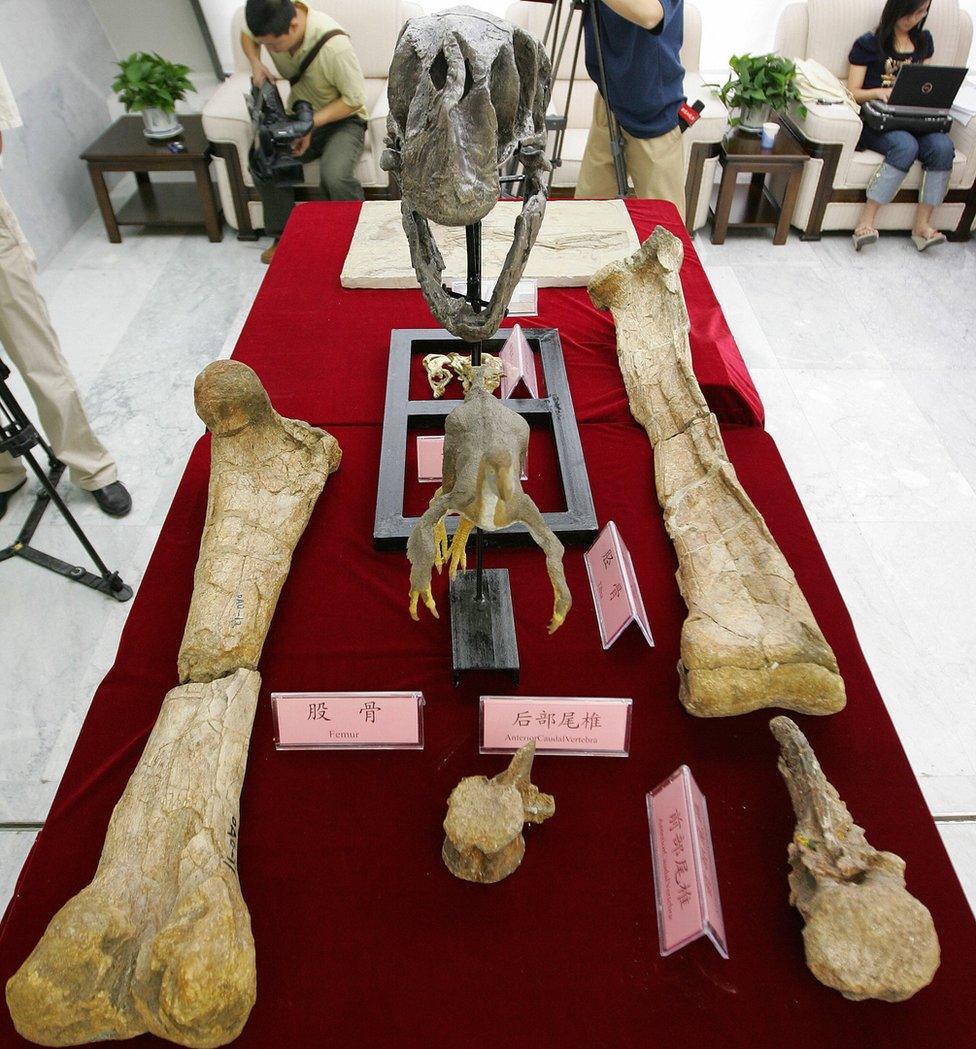
The exhibition, which comes to Nottingham next summer, is on loan from museums in China
- Published21 January 2016
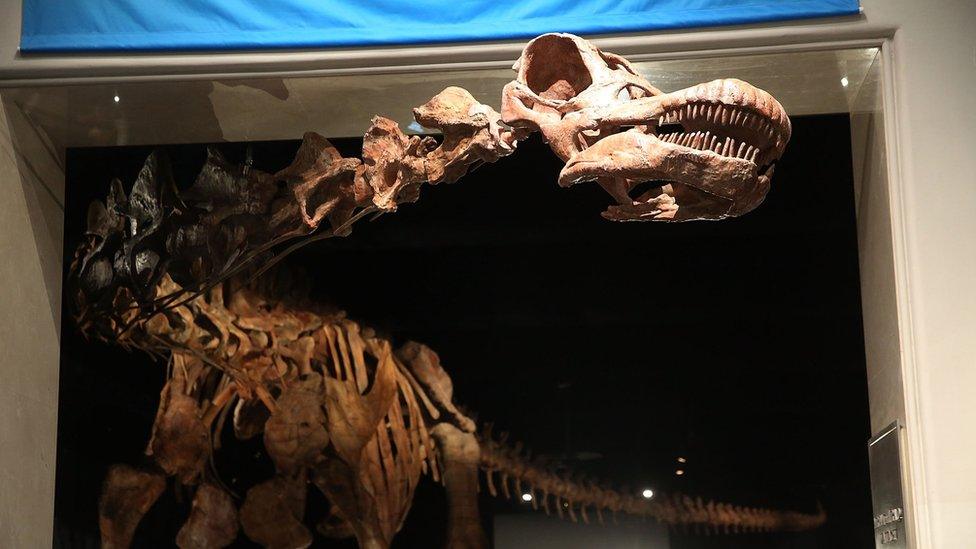
- Published9 June 2015
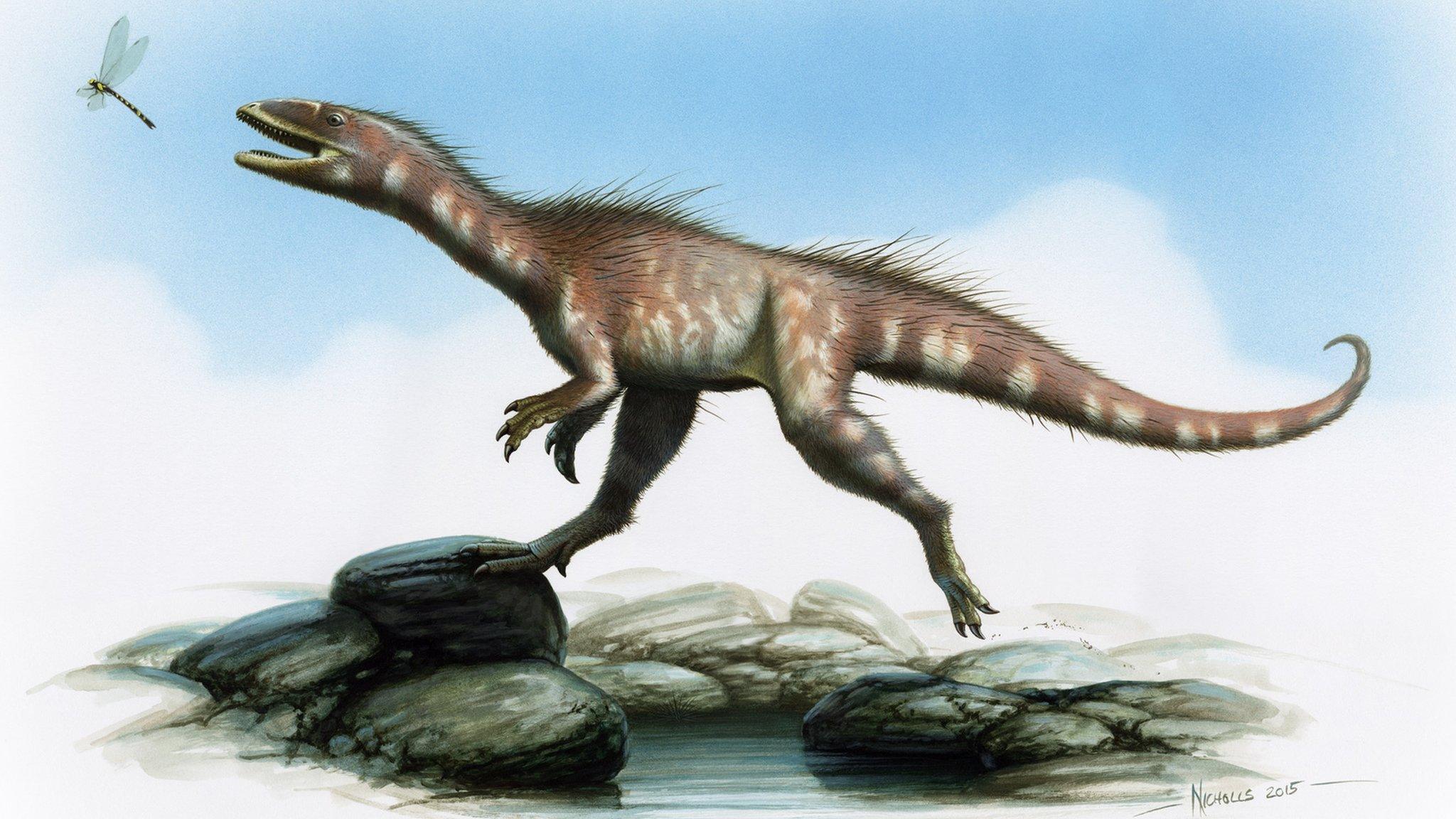
- Published15 April 2014
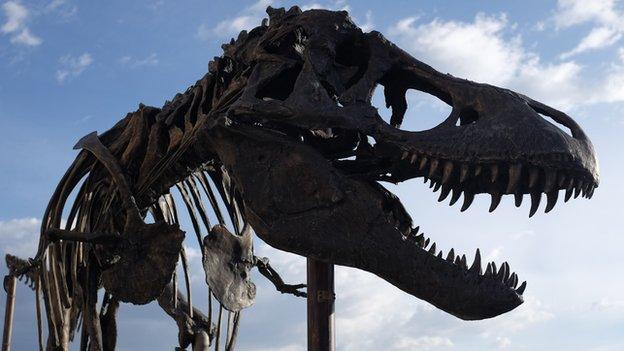
- Published15 August 2013
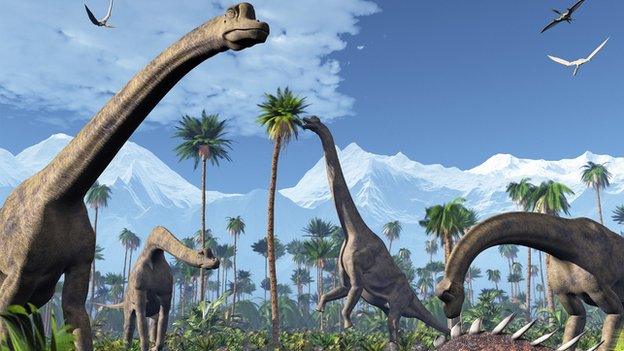
- Published26 May 2012
